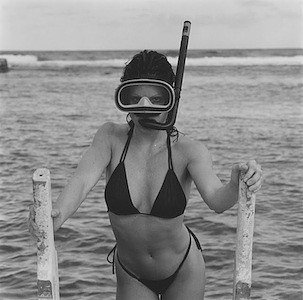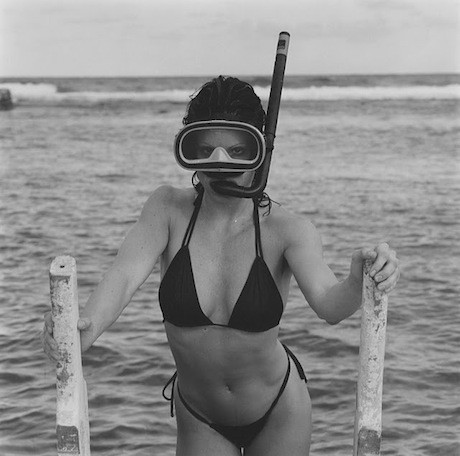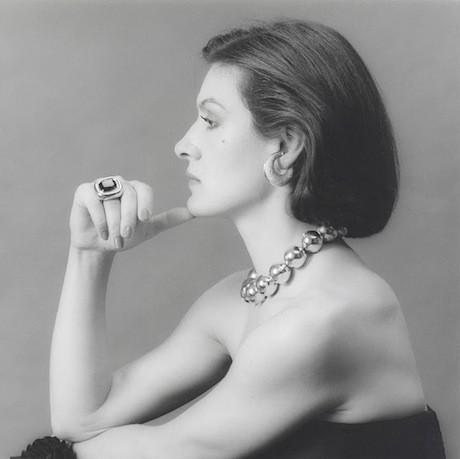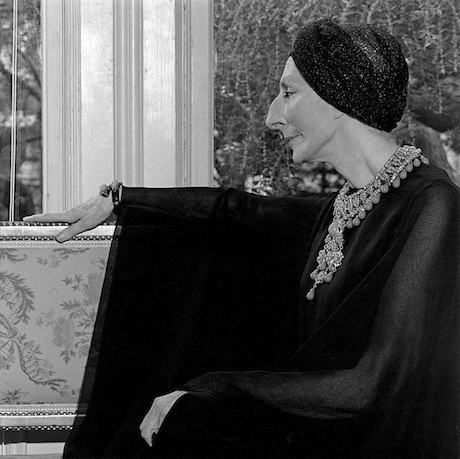The Softer Side of Hard-Core Photos in Paris

Wed 28 Dec 2011

Lisa Lyon. All Mapplethorpe works © The Robert Mapplethorpe Foundation, used by permission, courtesy Galerie Thaddaeus Ropac, Salzburg/Paris.
The hippest crowd in Paris gathered to see photos in Paris at the Thaddaeus Ropac Gallery on November 25. Actor Stephen Dorff was chatting to musician Thomas Mars; designer Charlotte Bialas sipped a drink next to the editor of i-D magazine. Rumors of Patti Smith showing up abounded. And of course Sofia Coppola was there, pretty and petite in a signature print blouse, to present the show she curated for the gallery, featuring Robert Mapplethorpe’s lesser-known black-and-white works.
Coppola selected the images from the Robert Mapplethorpe Foundation, in New York, and private collectors. She was chosen to act as curator by the gallery’s owner, Thaddaeus Ropac, who has been a large supporter of Mapplethorpe’s work since the 1980s. It’s not the first time Mr. Ropac has asked a celebrity artist to curate a Mapplethorpe show for his gallery: “Eye to Eye” was curated by Cindy Sherman back in 2003, and David Hockney had a go in 2005.

Paloma Picasso.
Coppola seems to have taken a much more feminine approach to Mapplethorpe’s notoriously masculine, sexually aggressive work: she selected gentler images of children, animals and nature, in contrast to the hard-core images of sadomasochism, porn stars and gay sex that Mapplethorpe is better known for. In fact, there is only one penis to be found in the entire show, and the flowers that are represented are not as overtly sexual as Mapplethorpe’s typically phallic bulbs. “I guess [being a woman] comes out in what I’ve selected here,” Coppola admitted. But why black and white, when Mapplethorpe worked so well with color, too? “He was a genius with light, and I think the black-and-white works show that best,” she explained.
Photography has long been a passion of Coppola’s, as has fashion: she studied photography at school; was an intern at Chanel at the tender age of 15; has been a muse and model for Marc Jacobs; and created her own clothing line, Milk Fed, with Sonic Youth’s Kim Gordon. Coppola’s interest in fashion may have had some influence on her selection of female portraiture in this show, none of which would be out of place in an issue of Vogue. There’s Paloma Picasso, regal in pearls; model Marisa Berenson, whose back is exposed in a subtly sensual pose; and Katherine Cebrian, a vision of turbaned elegance.

Katherine Cebrian.
Growing up in California may have also been behind Ms. Coppola’s decision to include so many of Mapplethorpe’s relatively rare landscapes, such as Crashing Waves and Palm Tree. Scanning the entire show, it seems the images can be read more as a reflection on Coppola’s own taste, interests and history than as a retrospective of Mapplethorpe’s work, but what she has achieved here is important. She has shifted the common perception of Robert Mapplethorpe from that of a sex-obsessed, self-centred, sadistic bad boy to that of a man who also adored children, appreciated nature and was gentle with animals. It may not be so hip, but it’s probably closer to the truth.
“Robert Mapplethorpe,” curated by Sofia Coppola, will be on view at the Thaddaeus Ropac Gallery until January 7, 2012.
Related Link
Thaddaeus Ropac Gallery
Editor’s note: Please check out our newly launched Girls’ Guide travel club and learn how you can save up to $500 on your next trip to Paris.